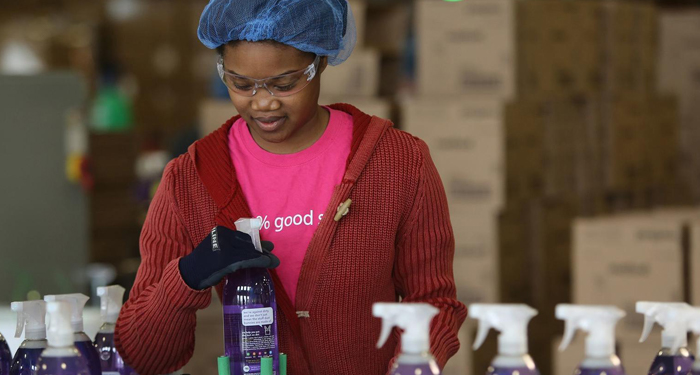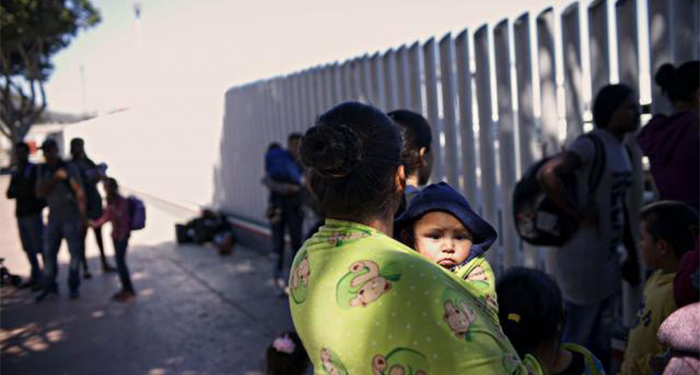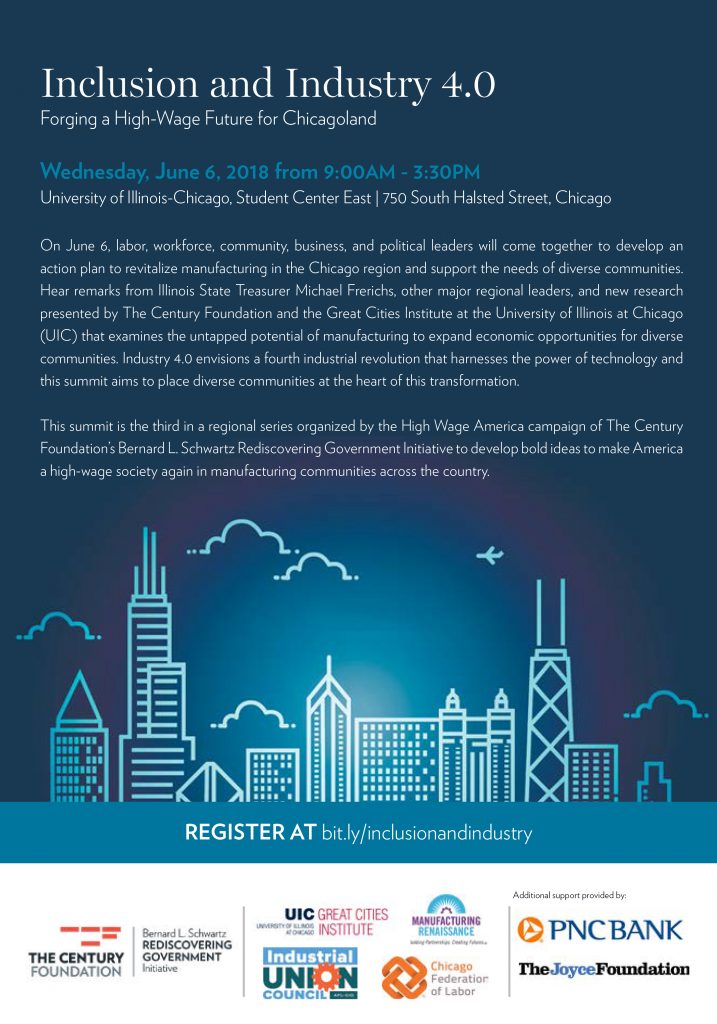
An employee performs quality control inspections of the liquid soaps that are produced and bottled at the Method Soap factory at 750 E. 111th in Chicago on March 25, 2015. (Antonio Perez / Chicago Tribune)
A Chicago Tribune Board’s editorial on the need for manufacturing jobs in the Chicago region cites findings from a recent report from the Century Foundation and the UIC Great Cities Institute that examines the area’s manufacturing sector and the opportunity for businesses to employ members of the city’s black and Latino communities.
A stubborn stereotype of Chicago is that it doesn’t make things anymore. It does. Among economic sectors, manufacturing remains one of the Chicago region’s biggest employers, with a workforce of more than 363,000 in 2017. Between April 2017 and March 2018, manufacturing yielded more than 58,000 job postings, according to a new study by the Century Foundation and the University of Illinois at Chicago’s Great Cities Institute. That outpaced more than a dozen other sectors, including retail, transportation/warehousing and education.



















































